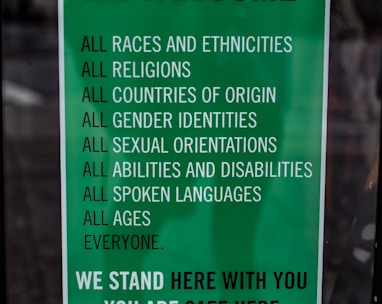
Equal Employment Opportunity
Harassment
Harassment in the workplace is a form of employment discrimination prohibited by various laws, including Title VII of the Civil Rights Act of 1964, the Age Discrimination in Employment Act of 1967 (ADEA), and the Americans with Disabilities Act of 1990 (ADA). Harassment involves unwelcome behavior based on characteristics like race, color, religion, sex (including sexual orientation, gender identity, or pregnancy), national origin, age (40 and older), disability, or genetic information. It becomes unlawful if it's a condition of employment or creates a hostile work environment. Harassment can come from various sources, including supervisors, co-workers, or even non-employees. Petty incidents generally don't qualify as harassment, and prevention is essential. Employers should have clear policies, complaint procedures, and anti-harassment training. Employees are encouraged to report harassment promptly and directly to prevent its continuation.


Employer Liability for Harassment
The employer is automatically liable for harassment by a supervisor that results in a negative employment action such as termination, failure to promote or hire, and loss of wages. If the supervisor's harassment results in a hostile work environment, the employer can avoid liability only if it can prove that:
1) it reasonably tried to prevent and promptly correct the harassing behavior; and 2) the employee unreasonably failed to take advantage of any preventive or corrective opportunities provided by the employer.
The employer will be liable for harassment by non-supervisory employees or non-employees over whom it has control (e.g., independent contractors or customers on the premises), if it knew, or should have known about the harassment and failed to take prompt and appropriate corrective action.
When investigating allegations of harassment, the EEOC looks at the entire record: including the nature of the conduct, and the context in which the alleged incidents occurred. A determination of whether harassment is severe or pervasive enough to be illegal is made on a case-by-case basis.
If you believe that the harassment you are experiencing or witnessing is of a specifically sexual nature, you may want to see EEOC's information on sexual harassment.


Age Discrimination
Age discrimination involves treating an applicant or employee less favorably because of his or her age.
The Age Discrimination in Employment Act (ADEA) forbids age discrimination against people who are age 40 or older. It does not protect workers under the age of 40, although some states have laws that protect younger workers from age discrimination. It is not illegal for an employer or other covered entity to favor an older worker over a younger one, even if both workers are age 40 or older.
Discrimination can occur when the victim and the person who inflicted the discrimination are both over 40.


Age Discrimination & Work Situations
The law prohibits discrimination in any aspect of employment, including hiring, firing, pay, job assignments, promotions, layoff, training, benefits, and any other term or condition of employment.


Age Discrimination & Harassment
It is unlawful to harass a person because of his or her age.
Harassment can include, for example, offensive or derogatory remarks about a person's age. Although the law doesn't prohibit simple teasing, offhand comments, or isolated incidents that aren't very serious, harassment is illegal when it is so frequent or severe that it creates a hostile or offensive work environment or when it results in an adverse employment decision (such as the victim being fired or demoted).
The harasser can be the victim's supervisor, a supervisor in another area, a co-worker, or someone who is not an employee of the employer, such as a client or customer.
Age Discrimination & Employment Policies/Practices
Age discrimination involves treating an applicant or employee less favorably because of his or her age.
The Age Discrimination in Employment Act (ADEA) forbids age discrimination against people who are age 40 or older. It does not protect workers under the age of 40, although some states have laws that protect younger workers from age discrimination. It is not illegal for an employer or other covered entity to favor an older worker over a younger one, even if both workers are age 40 or older.
Discrimination can occur when the victim and the person who inflicted the discrimination are both over 40.




SIITS: Embracing Equality and Diversity for All, Including LGBTQ+
At SIITS (Sun Infotech IT Services), we are proud to be champions of equality and diversity. We understand that our strength as an organization lies in the rich tapestry of backgrounds, perspectives, and experiences that our team members bring to the table. That's why we're committed to fostering an inclusive workplace where every individual, regardless of who they are or who they love, feels valued, respected, and empowered.
In the spirit of this commitment, we want to make it clear: SIITS provides equal opportunities for all, including members of the LGBTQ+ community. We firmly believe that diversity is our greatest asset, and it fuels our innovation and success.
Discrimination or bias of any kind, including discrimination based on sexual orientation or gender identity, has no place within our organization. We actively promote a culture of acceptance and support for LGBTQ+ employees, customers, and partners. Our goal is not only to comply with legal and ethical standards but also to create a welcoming and nurturing environment where everyone can thrive.
We recognize that diversity is not just a buzzword; it's a pillar of our strength and a driving force behind our ability to adapt, grow, and excel in the ever-evolving world of IT.
